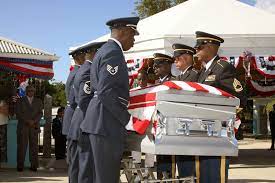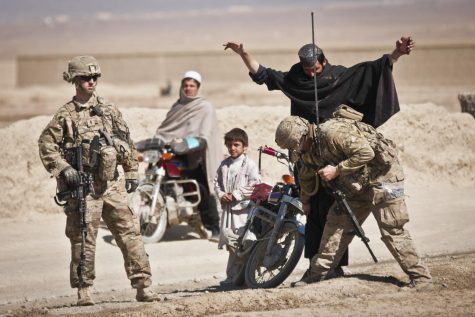United States’ Endgame in Afghanistan: A Timeline
September 29, 2021
The terrorist attacks on September 11, 2001 led to the United States’ 20-year deployment in Afghanistan that came to an end on August 30, 2021. As America’s longest war, it became very costly, both in lives and in dollars. 2,455 American service members lost their lives and the total cost for the government was $2.3 trillion. Below is a timeline of the United States’ endgame in Afghanistan, spanning over the last four years.

2018
September
President Donald Trump appoints Zalmay Khalilzad as special adviser to Afghanistan on September 5. Khalilzad’s job is to bring the Taliban and the Afghan government to a reconciliation. Khalilzad also worked as the ambassador to Iraq and Afghanistan under former President George W. Bush.
2019
September
President Donald Trump calls off a peace deal meeting with the Taliban after a U.S. troop was killed in an attack by the Taliban on September 7, just days before the anniversary of the attack on September 11, 2001. The secret meeting was planned to happen at the country retreat in Maryland for the U.S. president, Camp David.
On September 28, Ashraf Ghani wins the presidential election in Afghanistan. With the voter turnout at its lowest since 2001 and the political climate being split with allegations of fraud, the election was extremely close, with Ghani narrowly securing 50.64% of the votes.
2020
February
The Trump Administration comes to an agreement with the Taliban on February 29. The agreement states that the American government will withdraw all U.S. troops within the next 14 months and, in exchange, the Taliban will stop the attacks on American soldiers. The deal additionally details that the Taliban will guarantee Afghanistan would no longer be a safe haven to terrorists. The Taliban also agreed to begin peace talks with the Afghan government and discuss a possible cease-fire.
November
The Pentagon announces their plans on November 17 to cut U.S. troop size in half by January 15, 2021, before President Elect Joe Biden is inaugurated. The size will go from 4,500 soldiers to 2,500.
Relentless terrorist attacks in the Afghanistan capital of Kabul continue, with 19 already occurring this year.
The Electoral College confirms Joe Biden as the 46th President of the United States.
The Taliban urges President Biden to follow through with the agreement made earlier this year with former President Donald Trump.
2021
April
On April 14, President Biden pushes the deadline of withdrawal to September 11, the 20th anniversary of the terrorist attack in 2001. This date emphasizes the reason for this war. Although the date is pushed back, President Biden promises to end the war, stating, “It’s going to be hard to meet the May 1 deadline. Just in terms of tactical reasons, it’s hard to get those troops out. And if we leave, we’re going to do so in a safe and orderly way.”
4 days after the announcement of the later deadline, former President Donald Trump criticizes the choice, saying, “I wish Joe Biden wouldn’t use September 11 as the date to withdraw our troops from Afghanistan, for two reasons. First, we can and should get out earlier. Nineteen years is enough, in fact, far too much and way too long.”

July
U.S. forces abandon Bagram Airfield, the largest U.S. airfield in Afghanistan. According to the new Afghan base commander, Gen. Mir Asadullah Kohistani, the Americans did not inform him of their departure on the night of July 6.
Later this week, President Biden announces the new withdrawal date of August 31, declaring “speed is safety.”
August
The Taliban take the capital of Afghanistan, Kabul, as President Ghani flees the country on August 15. The United States Embassy staff is evacuated to an airport, while a Taliban official told Reuters that they want no casualties.
11 days later, two suicide bombers and gunmen attack the Kabul airport during the evacuations. 60 Afghans and 13 U.S. troops were killed, but the evacuations are still continuing. “We will not forgive. We will not forget. We will hunt you down and make you pay,” President Biden says in response to the terrorist attack. The Islamic State Group claims responsibility, and the Taliban are not believed to have been involved.
The last of the American military presence in Afghanistan departed on August 30, the night before the deadline. President Bident released a statement, saying, “Now, our 20-year military presence in Afghanistan has ended.” The departure marks the official end of America’s longest war.
Although the United States has officially withdrawn all troops from Afghanistan, problems still stand. About 100 Americans were left behind as well as the thousands of at-risk Afghans who were previously able to emigrate. Now that the Taliban has seized control of Afghanistan and have appointed a new government, a global fear is “a consolidation of power of all the terrorist groups [under] the umbrella of the Taliban and the space that the Taliban is providing for them,” according to Nader Nadery, a senior member of the Afghan Peace Negotiation Team. With a new government in Afghanistan and a risk for increased terrorism, we will see drastic changes occur not only within their country, but in the international community.








